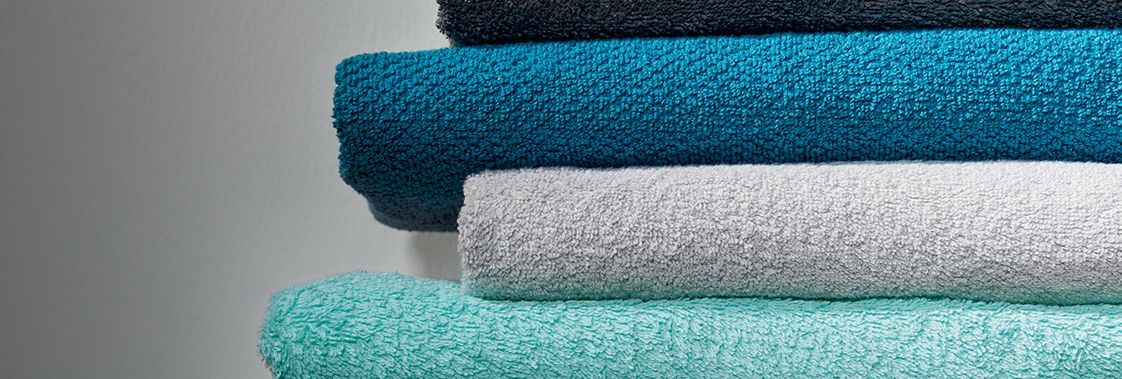So that you’re happy with your product for a long time, proper care and cleaning are essential. Below we give you some important information on how to clean and care for the different materials.

Wood / veneer
Permitted cleaning
Use a soft, lint-free cloth and a little lukewarm water.
Strong level of dirtiness
In the case of dried stains, a cleaning agent, such as universal cleaner.
Notes
To remove all dirt particles, always wipe along the grain of the wood. After cleaning, rub thoroughly until dry.
Plastic, directly coated, matt (Plastic laminate)
Permitted cleaning
Moist cloth and some mild cleaning agent, like universal cleaner.
Strong level of dirtiness
Allow the undiluted universal cleaner to work in a bit and wipe off with a moist cloth. Degrease the surface with grease solvent via gentle abrasion.
Notes
When cleaning with universal cleaner, wipe off with a moist cloth to avoid streaks. Too much pressure can result in shiny spots.
Film-laminated (Plastic)
Permitted cleaning
Moist cloth and some mild cleaning agent, like universal cleaner.
Strong level of dirtiness
Allow the undiluted universal cleaner to work in a bit and wipe off with a moist cloth.
Notes
Do not use any abrasive cleaning utensils, such as microfibre cloths. When cleaning with universal cleaner, wipe off with a moist cloth to avoid streaks.
Satin lacquer, matt velvet lacquer, UV lacquer, matt lacquer laminate
Permitted cleaning
Use a soft, lint-free cloth and a little lukewarm water. In the case of light soiling, some cleaning agent, such as universal cleaner.
Strong level of dirtiness
Grease solvent or moist dirt eraser. Move the sponge across the surface with a slight amount of pressure. Too much pressure can result in shiny spots.
High gloss lacquer (High gloss lacquer, laminate, lacquer laminate / UV lacquer, high gloss)
Permitted cleaning
Use a soft, lint-free cloth and a little lukewarm water.
Strong level of dirtiness
Cleaning agent, such as universal cleaner. Wipe off with a moist cloth to avoid streaks.
Notes
Do not use any abrasive cleaning utensils, such as microfibre cloths. Never dry high-gloss fronts.
Glass (Clear glass, glazed glass)
Permitted cleaning
Use a soft, lint-free cloth and a small quantity of glass cleaner.
Strong level of dirtiness
Universal cleaner, grease solvent or moist dirt eraser. Move the sponge across the surface with a slight amount of pressure.
Notes
Too much pressure can result in shiny spots. After cleaning, finish off with a damp cloth and then dry thoroughly.
Worktops (HPL, plastic)
Permitted cleaning
Moist cloth and some mild cleaning agent, like universal cleaner.
Strong level of dirtiness
Allow the undiluted universal cleaner to work in a bit and wipe off with a moist cloth. Degrease the surface with grease solvent via gentle abrasion.
Notes
In the case of worktop decors with wooden structures, always wipe in the direction of the grain to remove all the dirt particles.
Cabinet inner sides (Plastic)
Permitted cleaning
Moist cloth and some mild cleaning agent, like universal cleaner.
Strong level of dirtiness
Allow the undiluted universal cleaner to work in a bit and wipe off with a moist cloth.
Anodised aluminium surface
Permitted cleaning
Use a soft, lint-free cloth and a little lukewarm water. In the case of light soiling, some cleaning agent, such as universal cleaner.
Strong level of dirtiness
Anodizing cleaner pure on a dry cloth. In the case of severe soiling of nylon fleece, clean by rubbing with increased pressure.
Notes
When cleaning with universal cleaner, wipe off with a moist cloth to avoid streaks. Polish the surface after cleaning with a fresh, soft and dry cloth.
Handles / handle strips
Permitted cleaning
Use a soft, lint-free cloth and a little lukewarm water.
Strong level of dirtiness
Cleaning agent, such as universal cleaner.
Notes
When cleaning with universal cleaner, wipe off with a moist cloth to avoid streaks.
Sink
Permitted cleaning
Use a soft, lint-free cloth and a little lukewarm water. In the case of light soiling, some cleaning agent, such as universal cleaner.
Strong level of dirtiness
Allow the undiluted universal cleaner to work in a bit and wipe off with a moist cloth. Remove water stains with vinegar cleaner or stainless steel cleaner.
Notes
When cleaning with universal cleaner, wipe off with a moist cloth to avoid streaks. Rub dry in order to avoid water stains. Always remove film (such as iron chips after newly installing water pipes) immediately using a standard stainless steel cleaner.
Permitted cleaning
Moist cloth and some mild cleaning agent, like universal cleaner.
Strong level of dirtiness
Allow the undiluted universal cleaner to work in a bit and wipe off with a moist cloth. Degrease the surface with grease solvent via gentle abrasion.
Luminaires
Permitted cleaning
Dry or slightly moistened lint-free cloth.
Notes
Before cleaning, switch luminaire off, allow to cook and pull out the mains plug.
Danger due to electric currents
Improper handling could cause risk of injury from electric shock!
Material damage due to water
Use of excess water when cleaning or steam escaping from heat-generating electrical appliances may cause permanent damage to the furniture including swelling.
Property damage due to improper cleaning
Improper cleaning can damage surfaces, cause scratching and reduce the material quality of the worktop.
Property damage due to wrong cleaning material or improper use
Improper cleaning utensils can result in irreparable damage to the surfaces, such as staining, changes to the gloss and material dissolution.
Here you can find detailed information on how to clean and care to download